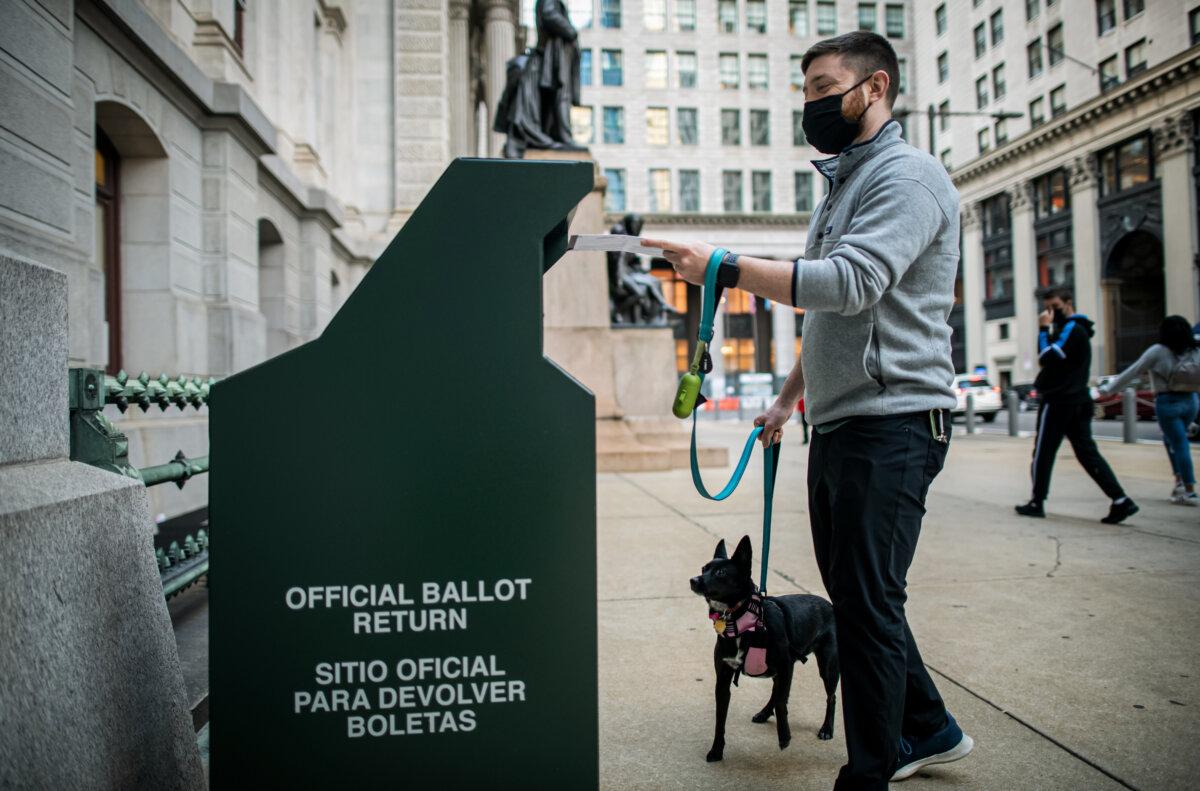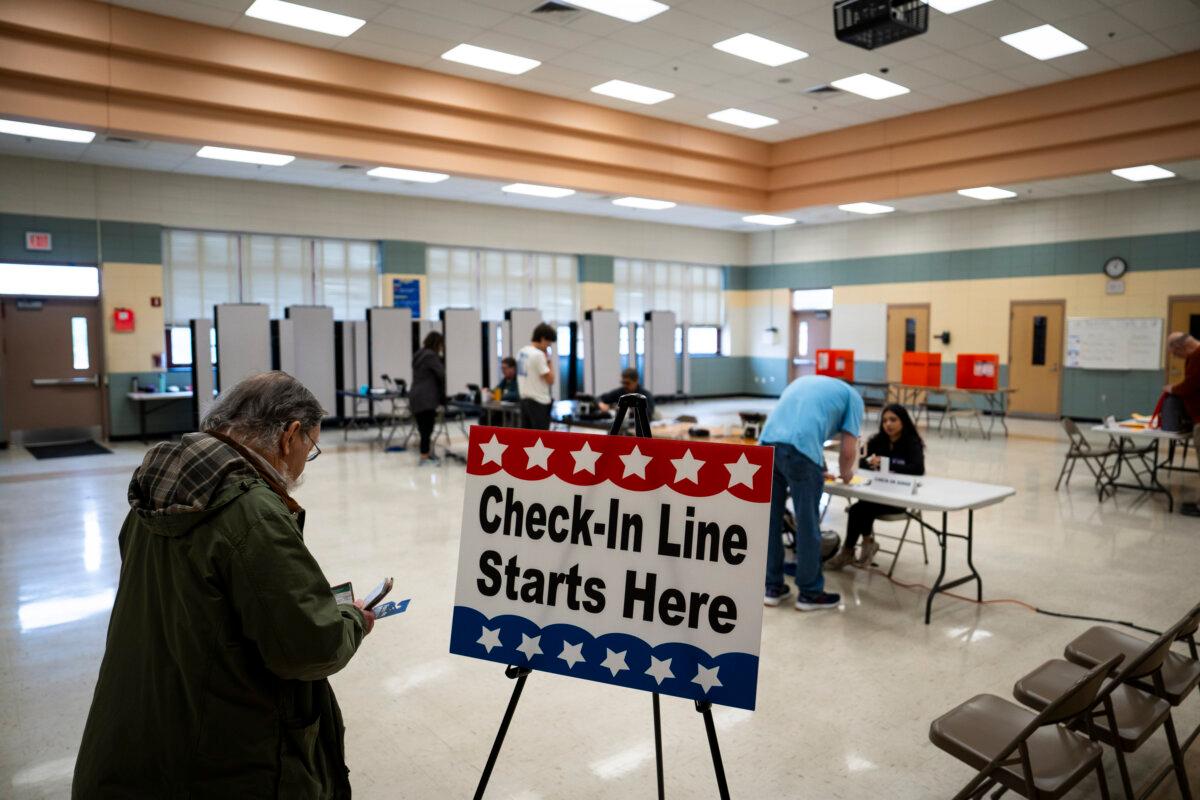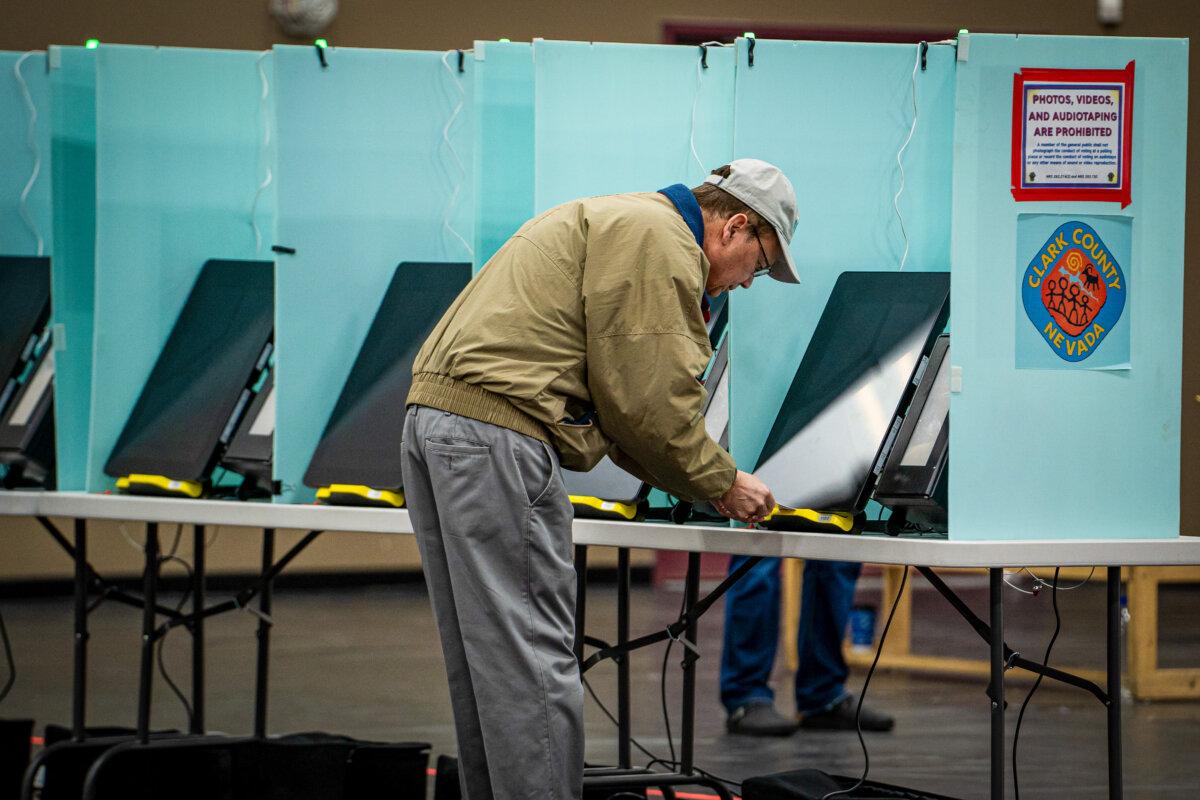The timeline could stretch days after Election Day based on how each state regulates late mail-in ballots.
Laws dictating how late mail-in ballots can be accepted differ from state to state. In some of the 2024 swing states, the timeline could stretch days after Election Day, Nov. 5, based on when ballots are accepted, processed, and counted.
Here are some dates and laws to keep in mind.
In Nevada, mailed ballots can be accepted as late as four days later, by 5 p.m. on Nov. 9, if they are postmarked no later than Election Day under state law.
Ballots that arrive days after Election Day with unclear postmarked dates are also acceptable by Nevada law.
“If a mail ballot is received by mail not later than 5 p.m. on the third day following the election and the date of the postmark cannot be determined, the mail ballot shall be deemed to have been postmarked on or before the day of the election,” the current statute states.
The same 2021 law from Nevada’s Democrat-dominated legislature established universal mail-in voting. All registered voters are sent ballots unless they opt out.
State and national Republicans challenged the post-Election Day ballot acceptance standard through a lawsuit. A judge dismissed the case in July, saying the plaintiffs did not have standing.
Nevada stands in stark contrast to North Carolina and most other battleground states.
In North Carolina, absentee ballots sent via mail must reach officials by 7:30 p.m. on Election Day.
The Republican-dominated legislature overrode a veto from Gov. Roy Cooper, a Democrat, to eliminate their own multi-day period for accepting ballots postmarked on or before Election Day.

Arizona mandates that mailed absentee ballots must reach county officials by 7 p.m. on Election Day.
Georgia law is broadly comparable. The state also directs county elections officials to store absentee ballots that arrive after the close of polls. Those ballots must eventually be destroyed.
Michigan law similarly states that absentee ballots must be received before polls close on Election Day.
The Commonwealth of Pennsylvania and Wisconsin set an 8 p.m. deadline for receipt of mailed absentee ballots.Most of the battleground states let officials start processing mail-in and absentee ballots before Election Day, sometimes even weeks ahead of time—reducing the workload on Election Day and potentially speeding up the arrival of results.
Pennsylvania and Wisconsin are exceptions.
In the Keystone State, pre-canvassing of absentee ballots can start at 7 a.m. on Election Day. That’s also when the tallying of unchallenged ballots can begin.
Canvassing of additional absentee ballots must commence by the third day after Election Day and, for military ballots received, “shall continue through the eighth day following the election.”
County elections boards must finish computing votes by Nov. 19 and must certify results by Nov. 25—that is 20 days after Election Day.
Between Nov. 5 and Nov. 25, candidates could launch various challenges to results.

On Sept. 13, Pennsylvania’s Supreme Court ruled against counting inaccurately dated mail ballots.
Wisconsin starts processing and counting absentee ballots on Election Day. The state must certify the general election results by the first day of December.
In Arizona, processing can start as soon as ballots are received. Tallying can start at that stage too.
However, under Arizona state law, “partial or complete tallies of the early election board shall not be released or divulged before all precincts have reported or one hour after the closing of the polls on election day, whichever occurs first.”
The release or possession of early results is a class 6 felony in the state, which could potentially translate to a prison sentence.
The deadline for Arizona’s official canvass of results is Nov. 25, 2024.
Arizona is notorious for taking a long time to count all its ballots.
The Associated Press called the state for President Joe Biden early the day after Election Day in 2020, but it continued monitoring results as they trickled in from Maricopa County and other parts of the state over the following days.
In Georgia, absentee ballot signatures are verified upon receipt by the clerk or registrar.
Additional processing steps begin at 8 a.m. on the third Monday before Election Day, when verified and accepted ballots are opened and scanned. Those ballots are counted starting at 7 a.m. on Election Day.
Voters who have to cure their absentee ballots for them to count must do so by Nov. 8. Counties certify results by Nov. 12 at 5 p.m., while the Secretary of State must certify all results by 10 days later, Nov. 22.
Michigan permits jurisdictions with populations above 5,000 to create absent voter counting boards that may “process and tabulate absentee voter ballots” during the eight days prior to Election Day.

Smaller jurisdictions can rely on such a board to start the processing and tabulation of such ballots the day before Election Day.
Otherwise, absentee ballots can start being counted at 7 a.m. on Election Day.
It too has a Nov. 8 deadline for absentee ballot curing. Counties must canvas by Nov. 19, while the Board of State Canvassers has a Nov. 25 deadline.
In Nevada, mail ballot signatures are verified upon receipt.
The counting of mail-in ballots starts 15 days ahead of Election Day. It must be finished by seven days after Election Day.
State-level canvasing and certification must conclude by Nov. 26 following a meeting between the secretary of state and a majority of Nevada Supreme Court justices.

In North Carolina, the mail ballot count can start at 5 p.m. on Election Day. But absentee ballot processing starts much earlier, at county election board meetings beginning on the fifth Tuesday before the election.
Results are certified by counties after a canvas on Nov. 15. An election protest can push back the certification timeline.

